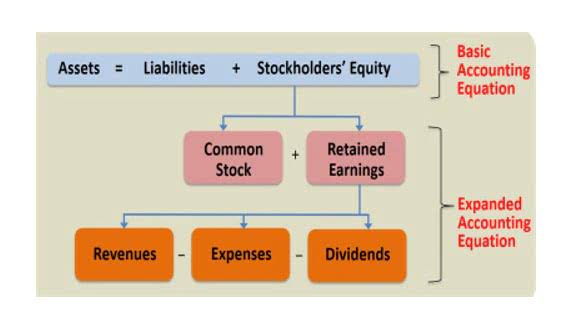Contra Accounts: Explained, Popular Types and Examples

In revenue reporting, contra accounts like sales returns and allowances adjust gross sales to present net sales, ensuring revenue figures are not overstated. This is particularly relevant for businesses with high return rates, as it provides a clearer picture of operational efficiency and customer satisfaction. This means that entries recorded on the left contra expense side of the T-account will increase the asset balance and entries recorded on the right side will decrease it. Contra asset accounts have a balance that is opposite from the regular asset accounts.

Is a Contra Account a Debit or Credit?
This not only provides transparency in financial statements but also QuickBooks enables stakeholders to better understand the true financial health of the company. Accounting utilizes contra expense accounts to adjust and balance financial statements, particularly in conjunction with contra revenue accounts, to ensure accurate reporting. Suppose a company estimates that 5% of its $200,000 accounts receivable balance is uncollectible.

What is Accumulated Depreciation?
A contra expense is an account in the general ledger that offsets a specific expense account. It is used when a company initially pays for an expense item and is then reimbursed by a third party. An example of this is when a company pays for medical insurance for its employees and records it as an employee benefits expense. The reimbursements from employees are recorded in a benefits contra expense account, which results in a reduced total benefits expense for the company. The contra asset account Accumulated Depreciation is deducted from the related Capital Assets to present the net balance on the parent account in a company’s balance sheet. The revenue contra accounts Sales Returns, Discounts and Allowances are subtracted from the main Sales Revenue account to present the net balance on a company’s income statement.

How Is a Contra Expense Account Recorded?

It records a $10,000 allowance for doubtful accounts by debiting Bad Debt Expense for $10,000 and crediting Allowance for Doubtful Accounts for the same amount. This practice adheres to the matching principle, which requires expenses to be recorded in the same period as the related revenues. This adjustment reduces net accounts receivable on the balance sheet and increases expenses on the income statement, providing a comprehensive view of the company’s financial health. To illustrate the use of contra accounts, consider a business accounting for bad debt expenses when customers fail to fulfill payment obligations. The Allowance for Doubtful Accounts, a contra asset account, estimates uncollectible receivables. Under accounting standards like those outlined by the Financial Accounting Standards Board (FASB), businesses estimate and record these allowances to report accounts receivable at their net realizable value.

Instead, an adjusting journal entry is done to record the estimated amount of bad debt. Accumulated Depreciation acts as a subaccount for tracking the ongoing depreciation of an asset. Despite their advantages, contra expenses have limitations such as potential complexity in financial calculations and the need for accurate tracking of contra revenue and expenses. A contra expense is a unique concept in finance and accounting that serves a specific purpose within the realm of financial statements.
- This helps them to accurately present their financial position to both internal and external stakeholders.
- The net effect of the two accounts is a reduced total benefits expense for the company.
- The cost of goods sold (COGS) account will have a debit balance of $100,000, representing the initial cost of the inventory.
- We encourage you to consider how effective bookkeeping and payroll management can contribute to your business’s success.
- Consulting financial experts is crucial for gaining a deeper understanding of how to effectively manage contra expenses within a business.
- For example, if a company returns defective goods to a supplier, the value of the returned goods is credited to a purchase returns and allowances account, a type of contra expense account.
- However, these accounts serve a vital function in maintaining accurate financial records and adhering to the critical matching principle.
- The purchase discounts account will have a credit balance of $2,000 (2% of $100,000), which represents the discount received from the supplier.
- These accounts are typically paired with a corresponding expense account, allowing for a more detailed and accurate representation of financial activities.
- Your newly acquired knowledge of contra expense accounts will enable you to navigate accounting practices with increased confidence and precision.
- Contra expense is a term used in finance to describe a negative expense that is recorded as a reduction to a specific account, typically resulting in a decrease in the company’s overall profit or income.
- Contra revenue accounts represent reductions in reported revenue, while contra expense accounts are deductions from reported expenses.
- By optimizing contra expenses, a company can streamline its financial reporting and improve profit margins.
For example, a grocery store displays advertisements for a national brand in its weekly flyer. The national brand gives the grocery store cash, reducing the overall cost of printing the flyer. Examples of deferred unearned revenue include prepaid subscriptions, rent, insurance or professional service fees.
Furthermore, revenue is reported on the income statement while contra expense is not. In double entry bookkeeping terms, a contra expense account refers to an account which is offset against an expense account. The purpose of a contra expense account is to record a reduction in an expense without changing the balance in the main account. The concepts of debits and credits in accounting dictate how transactions are recorded. For instance, to increase asset and expense accounts, we simply record a debit and to decrease those accounts, we can record a credit.
What Are the Benefits of Using Contra Expenses?
A contra expense account is a type of account in financial accounting that offsets the balance of a corresponding expense account. Contra expense accounts have a credit balance, which is the opposite of the typical debit balance found in expense accounts. The purpose of a contra expense account is Insurance Accounting to reduce the total expenses shown on the income statement by reflecting specific adjustments, recoveries, or reimbursements related to the expense. In practice, contra expense accounts are often used in various scenarios, such as purchase returns, allowances, and discounts received. For example, if a company returns defective goods to a supplier, the value of the returned goods is credited to a purchase returns and allowances account, a type of contra expense account.



